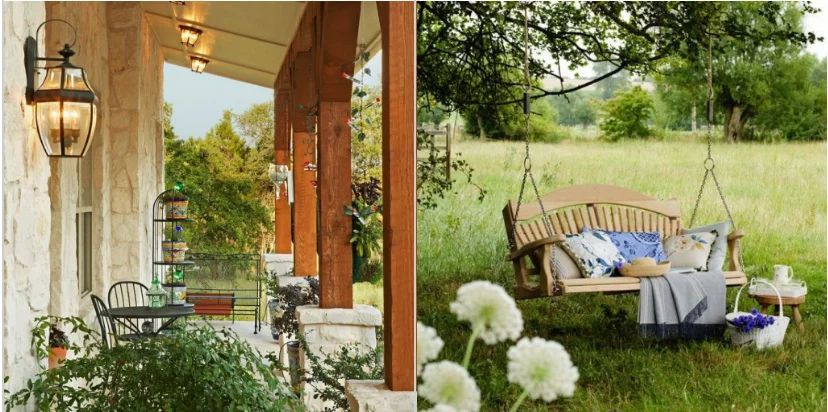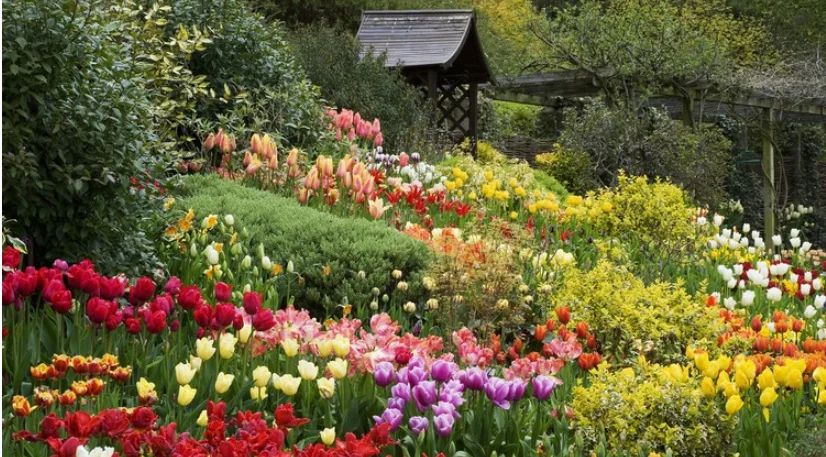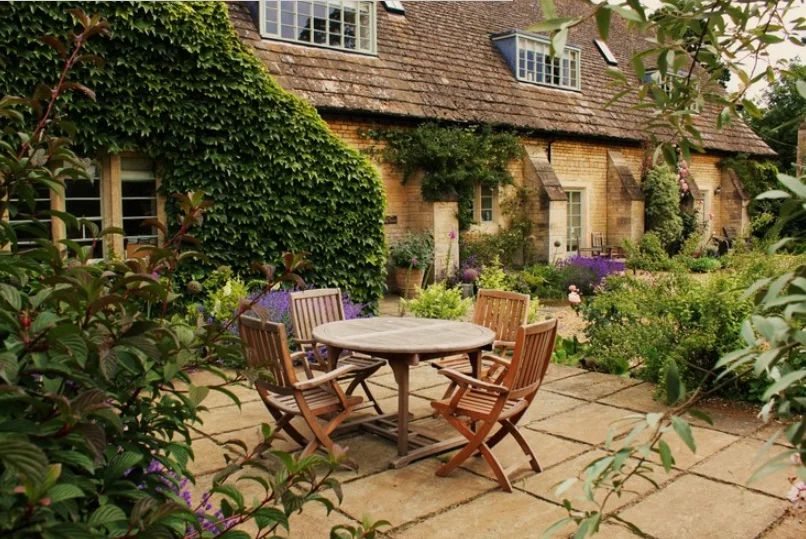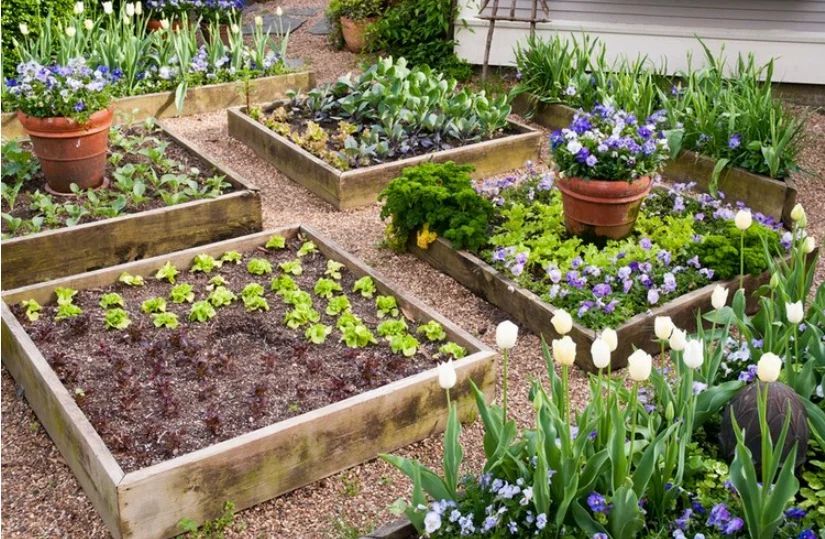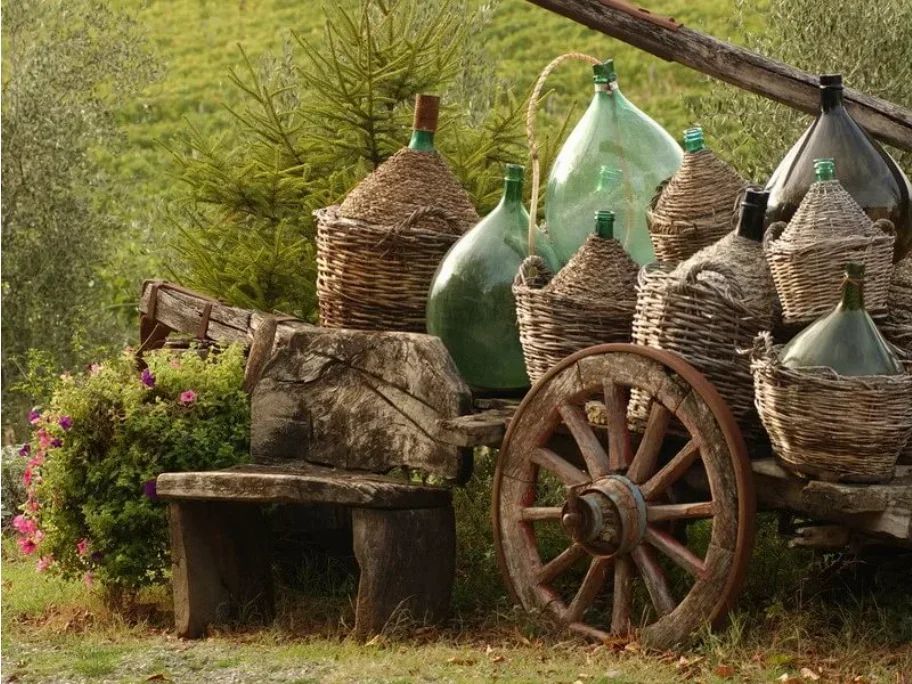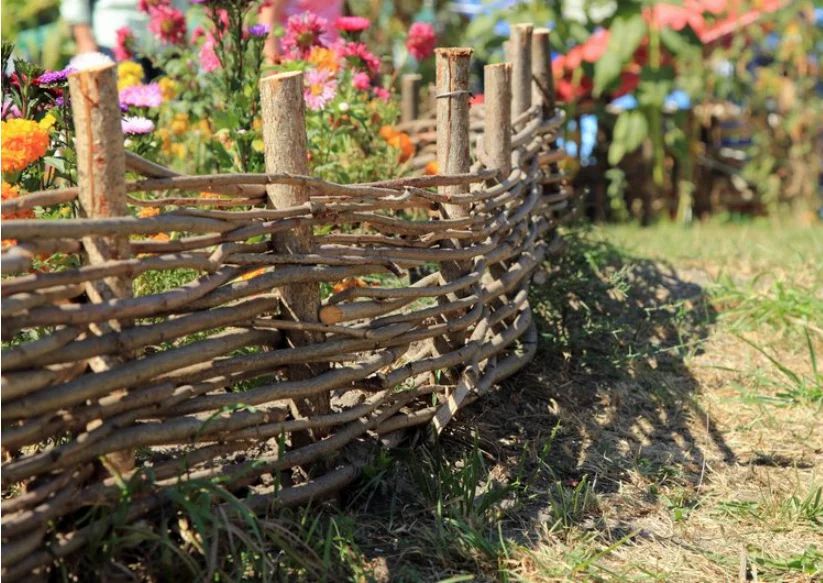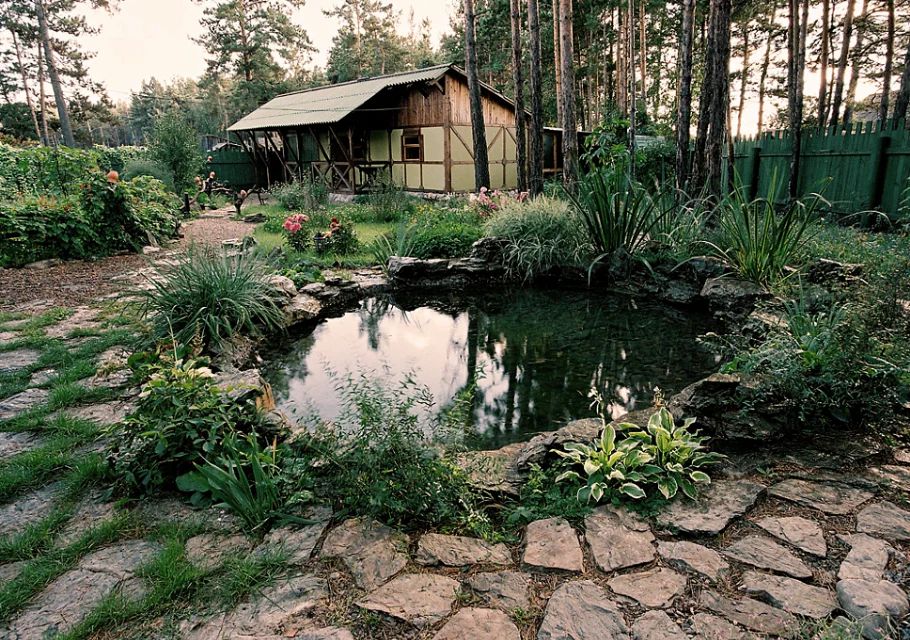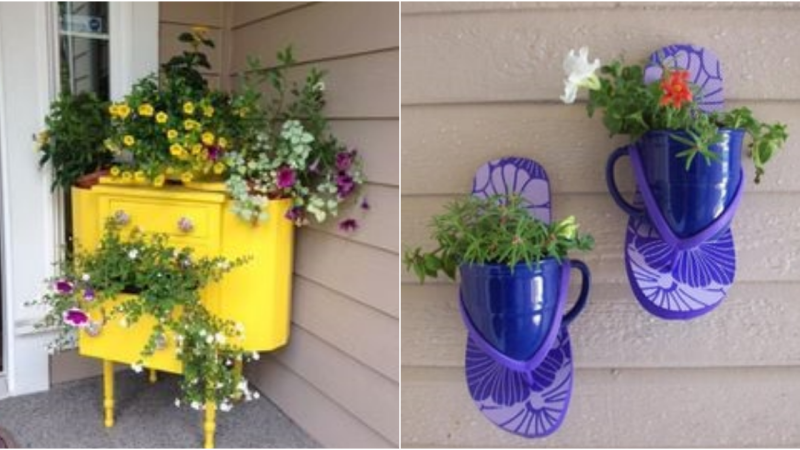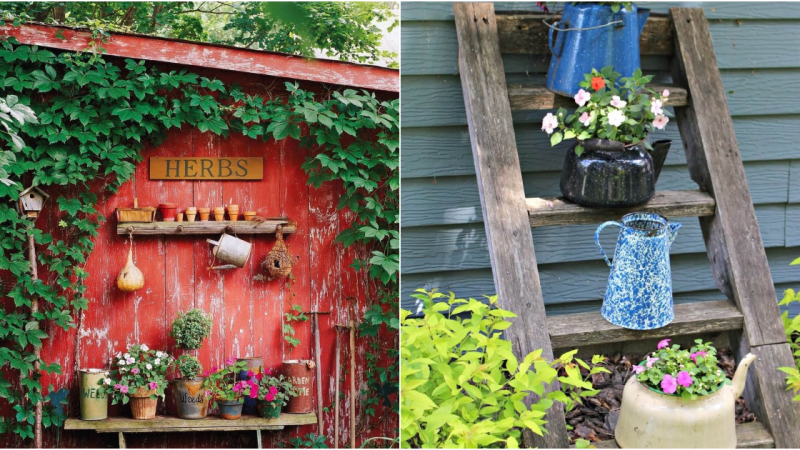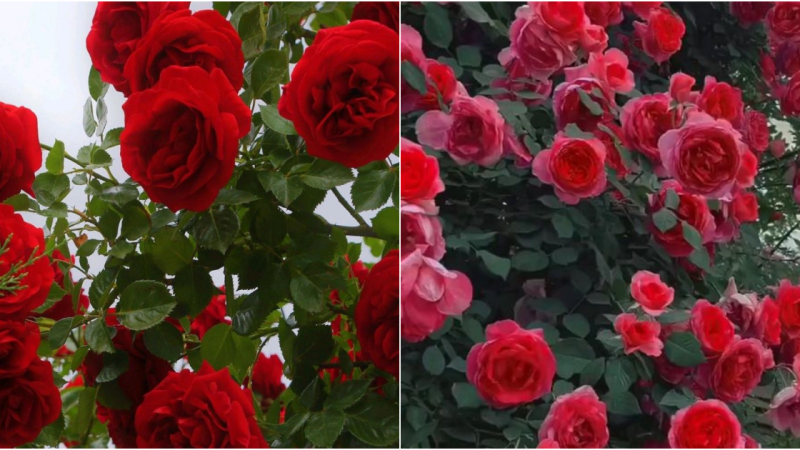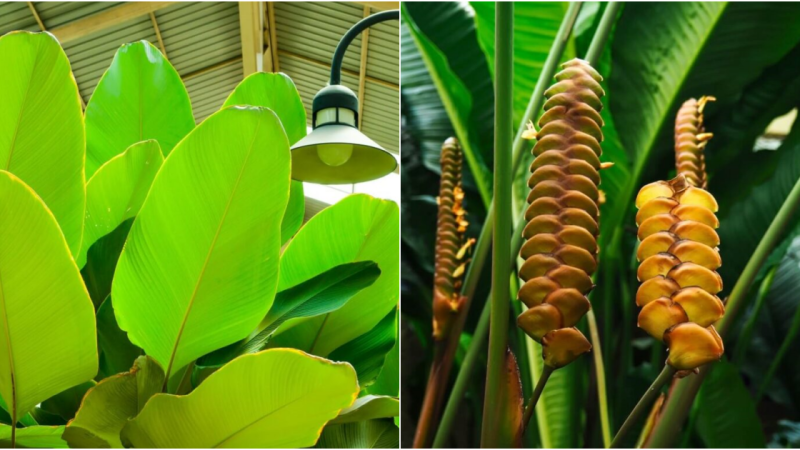COUNTRY-STYLE GARDEN DESIGN
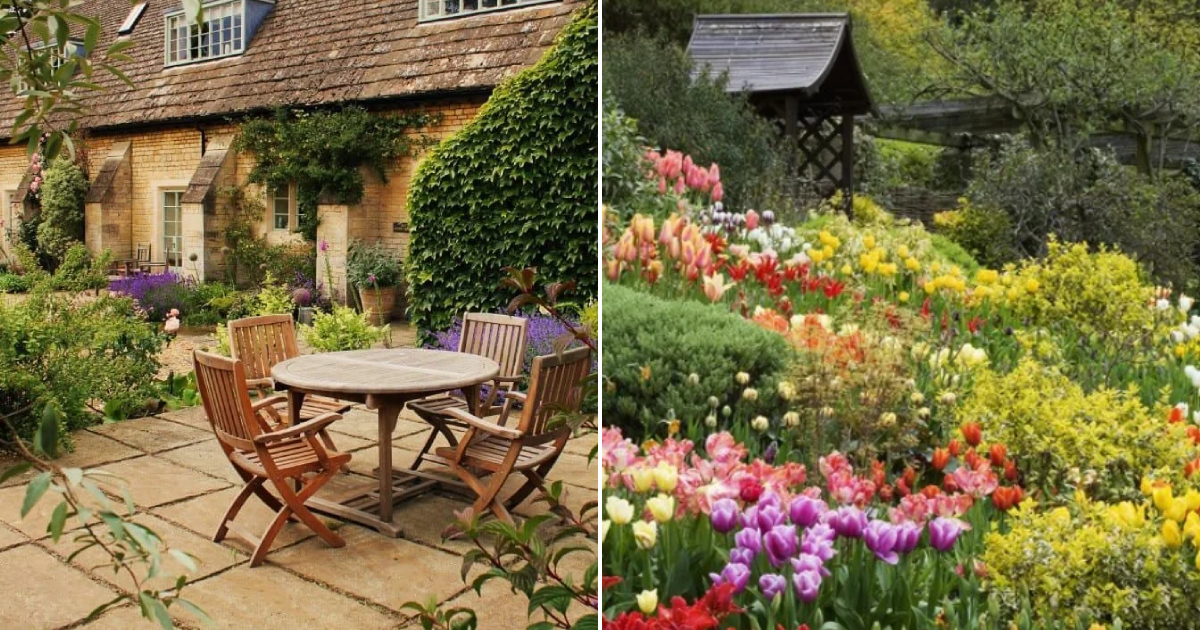
A country-style garden is a place where one can relax, immerse oneself in childhood memories, and momentarily slow down the relentless passage of time. The simplicity and naturalness of such a garden, along with the freedom in its layout and the use of unique decorations made from ordinary objects, create a special atmosphere of charm and coziness. Country-style landscaping allows us to immerse ourselves in the times of our grandparents’ youth.
One of the great advantages of a country-style garden is that there is no need to trim bushes and trees, mow the lawn, or tend to flower beds. The garden’s naturalness looks excellent even without excessive embellishments, providing a cozy retreat in nature.
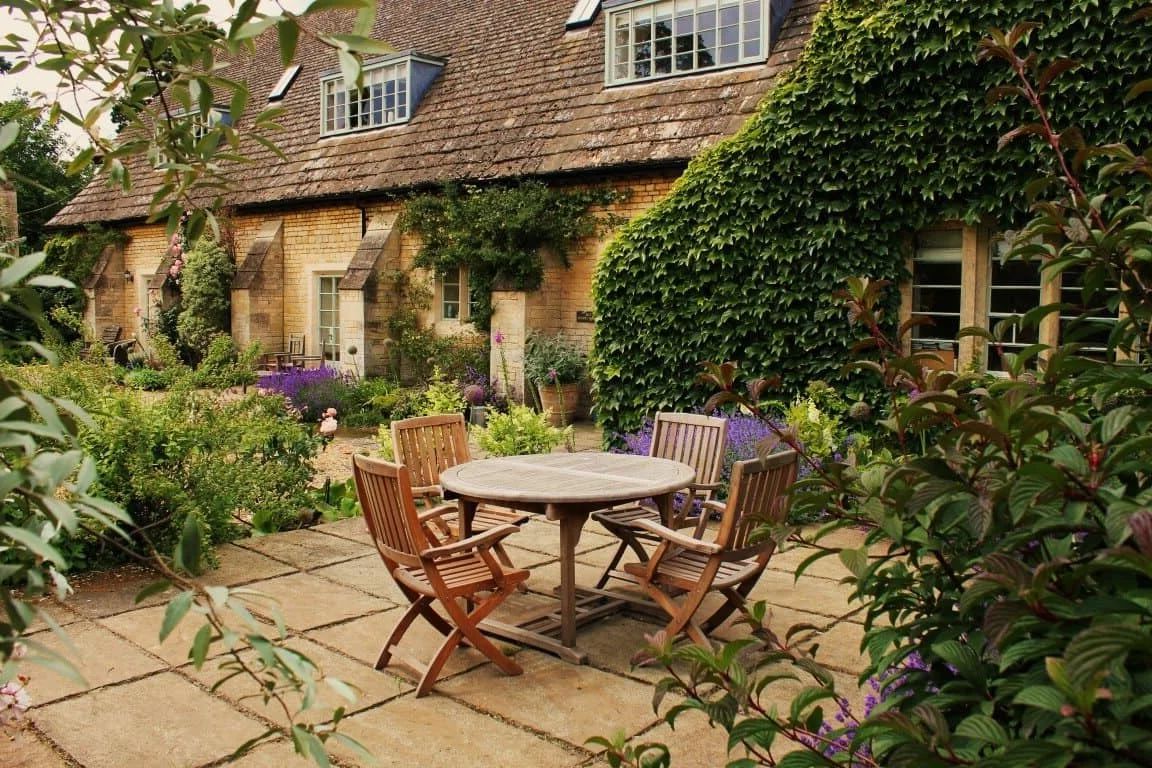
History of the Style’s Emergence
The country style in landscape design is likely one of the oldest. Its origins can be traced back to simple, old-fashioned gardens around small rural cottages, engulfed in blossoming trees and adorned with lovely meadow flowers.
Many people were attracted to this style because of its lightness and simplicity, leading to its rapid spread worldwide. The commonly used term “country” does not refer to American ranches; it represents a rural garden that reflects the beauty of nature. Each region has its distinctive features within this style, carrying its national and historical flavor.
For instance, the American country style is characterized by large, bright lawns in front of the house, as well as comfortable leisure areas such as verandas with garden furniture and hammocks.
The Dutch country garden features a small lawn near the house surrounded by decorative plants, while a significant portion of the plot is dedicated to a fruit garden where utility buildings are cleverly disguised. Flowers, especially tulips, hold an important place in a Dutch garden.
The Russian garden has always been characterized by practical use. Preference was given to fruit trees and vegetable gardens. Native trees like hazel, rowan, linden, and bird cherry were planted. A pond in the garden was used for fish farming.
1. Plot Layout
When deciding to design your garden in a country style, it’s important to ensure that the house itself harmonizes with the overall composition.
Next comes the layout of the plot. Although zones in this style do not have strict boundaries, there is still a conditional division present.
2. Garden and Vegetable Patch
Modern country-style landscape design combines practicality with decorative elements in the garden and vegetable patch. If you plan to have a full-fledged vegetable patch, it is best to integrate it with the utility area and conceal it behind fruit shrubs.
With some imagination, you can turn many vegetables into landscape art. The key is to consider the compatibility of certain plants.
3. Decorative Elements
The simplicity and naturalness of the country garden also extend to the selection of materials for decorations. Wood, clay, bark, wicker, straw, stone, and weathered iron items are primarily used.
Furniture in a country yard and garden should be wooden or wicker. It can be purchased from a store, but handmade furniture adds a more interesting touch.
Various decorative accessories play a significant role in the country style. Many old, unused items of rural household utensils can be repurposed for this purpose.
All these decorative elements should be part of rural life, seamlessly blending into the overall style. It’s crucial to strike the right balance and not overload the garden with decorations, avoiding a carnival-like atmosphere.
4. Style Elements
Other important elements that help create and emphasize the country style in landscape design are fences, garden paths, and water features.
The straightforward and accessible country style in landscape design maintains its popularity and does not yield to fashionable and elaborate styles. Relaxing in such a garden allows you to escape the daily hustle and bustle, enjoy moments of solitude, experience lightness and freedom, and savor the serene tranquility of the countryside.
Would you like to have a country-style garden?
